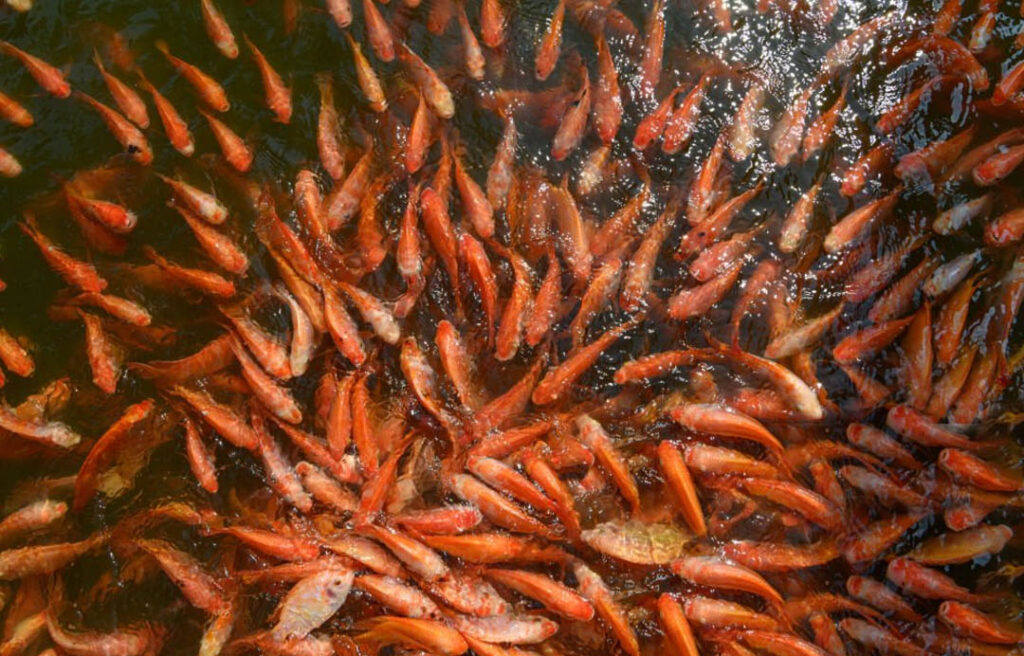Gardening is one of the healthiest hobbies ever. It keeps the gardener active and the ecosystem robust. Having pets is a valuable add-on because they often become your companions in the daily grinding mill that we call life.
Aquaponics is the wonderful art of combining both hobbies at reasonable costs without consuming too much time. It combines gardening with pet ownership – in this case, the pets are fish. This is a science that needs a bit of understanding but once you know the basics and choose the right fish tank, a major part of the work is done. This article will throw light on what is aquaponics, how it helps, and how the pick the right aquaponics cauldron to create a holistic system.
Aquaponics – What it means & how is it beneficial?
Aquaponics is formed by the amalgamation of the words ‘hydroponics’ and ‘aquaculture.’ Hydroponics is the method that helps grow plants in a soilless system with the help of water and minerals. Aquaculture is the technique involved in fish farming under controlled circumstances.
Thus, the fishes and the plants grow in one single ecosystem. The waste of the fish provides nutrition to the plants while the greens filter the surroundings for the marine species. There’s a third element required in the system – worms – that help in waste conversion.
One of the amazing benefits of the aquaponics system is that it helps save water. This is because only one-tenth of the water required in watering plants in their soil habitat is required in aquaponics. There’s no use of fertilizers or other chemicals that can be harmful to the biosphere. The electricity required to run the system is minimal. And, there are no toxic runoffs from this blended system. Overall, this arrangement makes for an incredibly successful energy-efficient system.
Aquaponics – How Does the System Work?
The main elements of the system and how it works:
- Beds for plants are made using clay pebbles or gravel.
- Plants grow in floating rafts made of foam.
- Bacteria on the beds convert the waste into nitrates.
- The surrounding water is used by the plants to get the minerals and vitamins that they need to grow, thereby removing the wastes and impurities from the water.
- The fishes get a clean setup, naturally cleaned by the plants.

Aquaponics – Which Kinds of Fishes and Plants can Survive?
This kind of environment is ideal for fishes like carp, catfish, tilapia, koi, sunfish, blue gill, guppies, crappie, perch, bass, and tetras. Some of these fishes are edible while others serve an ornamental purpose.
Veggies like kale, lettuce, and arugula and herbs like mint and basil can be grown in this ecosystem by first-timers. You can also consider succulents and houseplants that have low maintenance needs. People with professional proficiency are known to grow plants like broccoli, peas, tomatoes, onions, squash, etc.
Aquaponics – Choosing the Right Fish Tank
One of the core elements of an aquaponics system is the fish tank. You can create one DIY or buy it off the shelf.
There are a couple of things that need attention when choosing the home for your aquaponics system. It is not as easy as choosing a standard aquarium tank. Remember, that in this case, you need to provide a conducive growing environment not just for the fish but also for the plants.
It should be watertight, and airtight with marine-grade rubber or silicone gaskets around the plumbing fittings. It is also imperative that the container has no toxic material; therefore, the use of metals is not advised since they are prone to abrasions, and corrosions.
Here is a list of aspects to consider when choosing a fish container for your aquaponics system:

1. The Fish Tank Volume Should be Equal to the Grow Bed Volume
It is pertinent to focus on the ratio of the volume of the tank to the grow bed. The recommended ratio is 1:1. This is important so that the water is readily and effectively filtered by the plants. In case you increase the ratio, say, for example, make it 2:1 (fish tank volume to grow bed volume), then make sure to decrease the number of fish in the vessel. Or else, the plants will not be able to effectively clean up the water of toxicity.
The 1:1 ratio is recommended but the final ratio should be dependent upon your present geographic location and conditions. It is always advisable to speak to an expert if you are not sure about this.
2. Tank Size
The size is another important consideration for your aquaponics system. If you want the aquarium to be a decorative piece, then a small-size fish tank, about 20–30-liter capacity is ideal. These aquariums can be home to small fishes like guppies and look good indoors. But, if you want to keep edible fish in the tank, the size needs to be much bigger; about 45cm in depth about 200 liters of water. For example, to keep and sustain about 50 to 100 tilapias, the fish cauldron size should ideally be in the range of 200-gallon with a depth of 2 feet.
3. The Shape of the Tank
Fish tanks are ordinarily either round-shaped or oval-shaped. Sometimes, you’ll get a square or rectangle-shaped container too. Between the square and the round shapes, the latter are more popularly used because they have a flat bottom. The round-bottomed tank helps in the even circulation of water. This is a big pro as the wastes get effectively transported to the center of the container through centripetal force and do not stick to the tank’s corners.
The water flow is maintained, uniform, and consistent in the round tank which helps maintain good fish movement, also increasing the surface area of water that comes in contact with the atmospheric oxygen. This means a healthy exchange of gases as well as surplus microbes for nitrification.
Compared to this, square or rectangular-shaped cauldron need more regular waste clearance. Non-geometric patterns of cisterns are not usually advised because their curved edges cause dead spots in the water and do not permit free movement for the fish. Also, the waste in such tanks tends to gather at corners and edges which can become harmful in a while. If you are using any such shaped tank, ensure that you have a pump installed for proper circulation. Maintenance needs to be a high priority as the waste requires regular removal.

4. Should the tank have a cover?
This is another important question that you need to address before setting up the aquaponics system. The cistern should ideally have a covering, a solid covering is a good option. Even a fishing net is good enough as a cover. This is because fish do not usually require too much natural light.
A cover ensures the safety of the fish as there is no probability of the fish jumping out of the tank. Additionally, debris, dust, or leaves (in case the tank is kept outside) collection is minimized. Other than that, if there’s a chance that your place is visited by cats, birds, or any other predators, your pet fishes are safe and cannot be harmed by the bigger animals.
If your aquaponics system is kept outdoors, you might want to use a traditional agricultural shading net to provide shade to the marine species. This helps prevent algae formation in the water.
5. The Material
In a typical aquarium, the material used is either glass or plastic. For your system, the ideal material is fiberglass. Inert or food-grade plastic is also recommended. This is because these materials are lightweight and most durable. They are resistant to many corrosive forces of nature and therefore tend to have a long life. Besides, these materials can be easily installed, are mostly portable, and integrate well with plumbing fixtures. Most of all, fiberglass and plastic are widely available and pretty cheap.
As mentioned earlier, avoid using metals like copper or zinc because there’s always the chance of them getting eroded and rusted. They can also contaminate the water. Make sure that the material you select helps block sunlight. This is critical for preventing algae formation in the water.
6. Color Considerations
In most cases, the fish cauldron should be transparent and white in color. The use of any other light color is good. There are two reasons for this – one, white or light colors reflect light; therefore, the water does not heat up, especially outdoors. Secondly, light colors help you view your pets with ease.
7. Weight
Ensure that the tank is robustly made. It should be sturdy so that it can tolerate the weight of water, can bear the expansion and contraction of water as per external environmental conditions, and also cope with random movements of the marine creatures.
Besides the above factors, you also need to decide where to place the tank. It certainly should not be kept over a weakened structure. Also, try not to keep it under direct sunlight or in areas where the temperature is prone to fluctuate. Always think about what your pets would prefer before making a choice. Keeping yourself informed about the peculiarities of the specific species of fish is also important.
Sum Up
As is evident, picking the right type of fish tank is very crucial to set up a healthy aquaponics system. With so many choices, the decision can be overwhelming. Follow this guide to pick the right one for your place and let your pets sustain and grow in a nutrient-rich eco-friendly aquarium.

